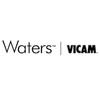
Content sponsored by:
VICAM
Which Mycotoxin Testing Technology is Right for Me?
Published: February 19, 2024
By: Vicam Waters
Mycotoxins are produced by fungi and can lead to sickness in humans and animals, which explains why testing for them in crops, feeds, and food products is so important and is often a regulatory and customer requirement. Fortunately, testing technologies have evolved from slow, tedious, and complicated to smart, fast, and data connected.
Tests vary in their performance capabilities and suitability for field, process, or lab environments. With a number of different options, you may be wondering which one is right for your operation. Let’s take a look at two that are often considered:
Field-Based Testing
Testing near the storage, transport, or production site gives quality managers time to respond, and because of the rapid methods often used, is often significantly faster to obtain results. Results can be obtained in less than 10 minutes for field-based tests. Newer tests also reduce or eliminate organic solvent waste required by older, and often more costly, forms of testing, because most methods use water-based extraction while still providing sensitive, accurate data.
Field Test: Lateral Flow Strips
Lateral flow strip tests are one form of field-based testing that can be approved by USDA-FGIS. They take up very little space in the work environment and can be run (almost) anywhere.
Lateral flow strip testing is well-suited for raw materials by grain elevators, food processing facilities, and export/official inspection sites. Time to result is minimal, and in the case of VICAM products, the added benefit of USDA-FGIS certification provides added confidence in test results, especially when they are used to screen for compliance.
Most recently, VICAM have developed a universal calibration approach to enable lateral flow test strips to detect and quantify mycotoxins in complex samples such as finished feeds and pet foods. This breakthrough provides added screening capabilities to the fast-paced, high-volume production environments that depend on finished product testing for quality assurance and control.
New Capability: Strip Tests for Feed and Pet Food
Lateral flow strip tests can now be used to test aflatoxin, fumonisin, and DON in finished feed and pet food. In the past, strip tests were not able to overcome challenges with sample complexity. Universal calibration is the innovation that provides answers to this challenge, and enables one procedure and calibration to test the “big three” mycotoxins in most feed and pet food samples.
Laboratory Technologies
Labs may use instrumentation such as LC or LC-MS/MS, which requires a significant capital investment and a qualified technician or chemist. Sample preparation tools can help to remove background interferences and improve method performance—especially for complex samples such as processed food or feeds.
Lab-based testing using chromatography methods is an important option for highly complex processing coproducts and finished products, but may not be the go-to choice for standard raw materials and feeds due to its significantly higher cost and longer turnaround time.
Which Will You Choose?
Each testing technology offers pros and cons. It really comes down to your goals: are you looking for speed with a little more work on your end or do you have the time and resources to outsource?
To learn more about the mycotoxin testing solutions that are perfect for on-site situations, contact us today by email: vicam@vicam.com, or phone: +1.508.482.4935.
Related topics:
Authors:
VICAM
Recommend
Comment
Share

Would you like to discuss another topic? Create a new post to engage with experts in the community.

.jpg&w=3840&q=75)